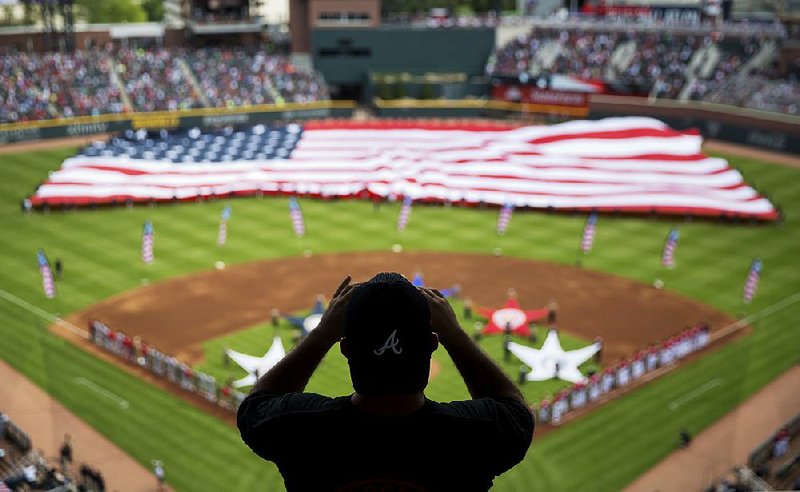CHICAGO -- This afternoon, the crowd at Wrigley Field will be asked to stand and "gentlemen" reminded to remove their caps for the playing of "The Star-Spangled Banner."
Fans who can recite the words as easily as the alphabet will sing or listen to the story of a flag that continued to wave throughout one of the most famous battles in American history.
What they may not know is that Francis Scott Key, apparently better at lyrics than melody, put his description of the battle of Fort McHenry to an old English tune that had a lot less to do with patriotism than it did with booze and women. Or that this year marks the 100th season since the song was played for the first time at a World Series game -- an event that helped cement it in the national consciousness and become the national anthem that is now simply assumed to be part of game day in American sports, from Little League to the Super Bowl to medal ceremonies at the Olympics.
"Certainly the outpouring of sentiment, enthusiasm and patriotism at the 1918 World Series went a long way to making the [song] the national anthem," said John Thorn, Major League Baseball's official historian.
On Sept. 5, 1918, newspapers were dominated by news of World War I. In Chicago, one of the headlines read, "Chicagoans on the List," and it was a particularly harrowing moment in the city for another reason: Someone, possibly self-proclaimed anarchists and labor activists, had the day before tossed a bomb into a downtown federal building and post office, killing four people and injuring dozens more.
The World Series was in town, with the Cubs hosting Babe Ruth and the Boston Red Sox. The Chicago games were played at Comiskey Park, the home of the White Sox, instead of their new home at Wrigley Field, what was called Weegham Park at the time, because it held more fans. But in a city jittery over the bombing and weary from the war, Game 1 that day attracted fewer than 20,000 fans, the smallest World Series crowd in years.
When they got there, they didn't make much noise, though that could have had something to do with the 1-0 masterpiece Ruth was pitching for the Red Sox.
"There was no cheering during the contest, nor was there anything like the usual umpire baiting," reported one Boston newspaper.
Then, in the seventh inning, a band from the Navy training station north of Chicago started to play "The Star-Spangled Banner."
The song had been played before at major league games, from at least 1862 and on opening day in 1897, in Philadelphia, Thorn said. But this time, reported The New York Times, something happened that was "far different from any incident that has ever occurred in the history of baseball."
Players took off their caps as they faced a flag that fluttered atop a pole in right field as the 12-piece band began to play.
All of them except Red Sox infielder Fred Thomas.
Thomas was in the Navy during the series -- he played on the team fielded by the Great Lakes station that was also home to the band -- but was granted furlough so he could play. When the Wisconsin native heard the music, "He turned toward the flag, kept his hat on and gave a military salute," said Jim Leeke, author of From the Dugouts to the Trenches: Baseball During the Great War.
A few fans began to sing. Then others joined in "and when the final notes came, a great volume of melody rolled across the field," the Times reported. And when it ended, "onlookers exploded into thunderous applause and rent the air with a cheer that marked the highest point of the day's enthusiasm."
Not everyone thought what happened was a big deal. Chicago sportswriter Ring Lardner mentioned it, but only as a punch line as he reported that Thomas had stood at attention three times during the game, once during the anthem and twice when the umpire was calling him out on strikes.
It wasn't until 1931 that Congress and President Herbert Hoover officially designated the song as the national anthem. Still, it was clear the song was on its way after that day in Chicago.
For one thing, it was played when the series got back to Boston. And as one story goes, Red Sox owner Harry Frazee was so impressed with the way the song quieted rowdy fans that the next season he ordered the band to play it while the flag was presented on the field.
"It was a turning point and from then on it was played at all opening days and World Series games," Leeke said.
The song was played just on holidays or special occasions for years. It wasn't until the 1940s during World War II that major league teams started playing it every day.
Sports on 07/04/2017

